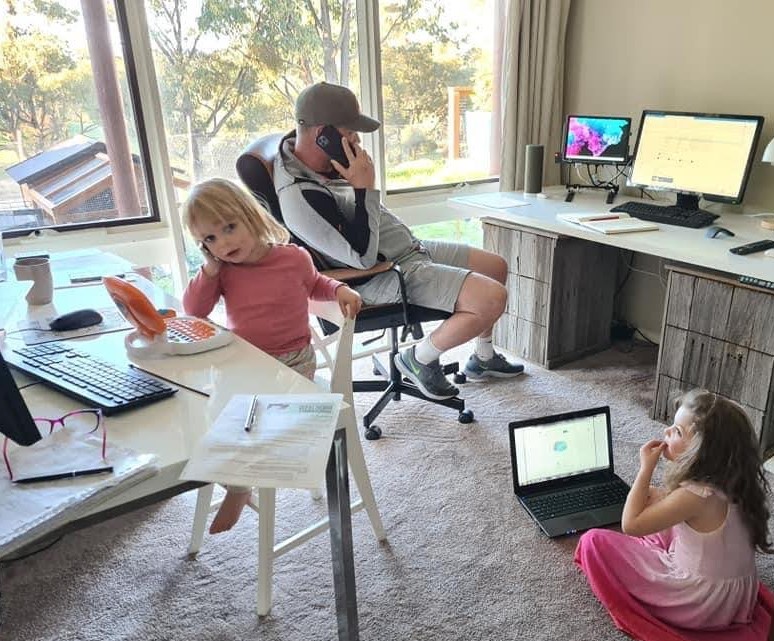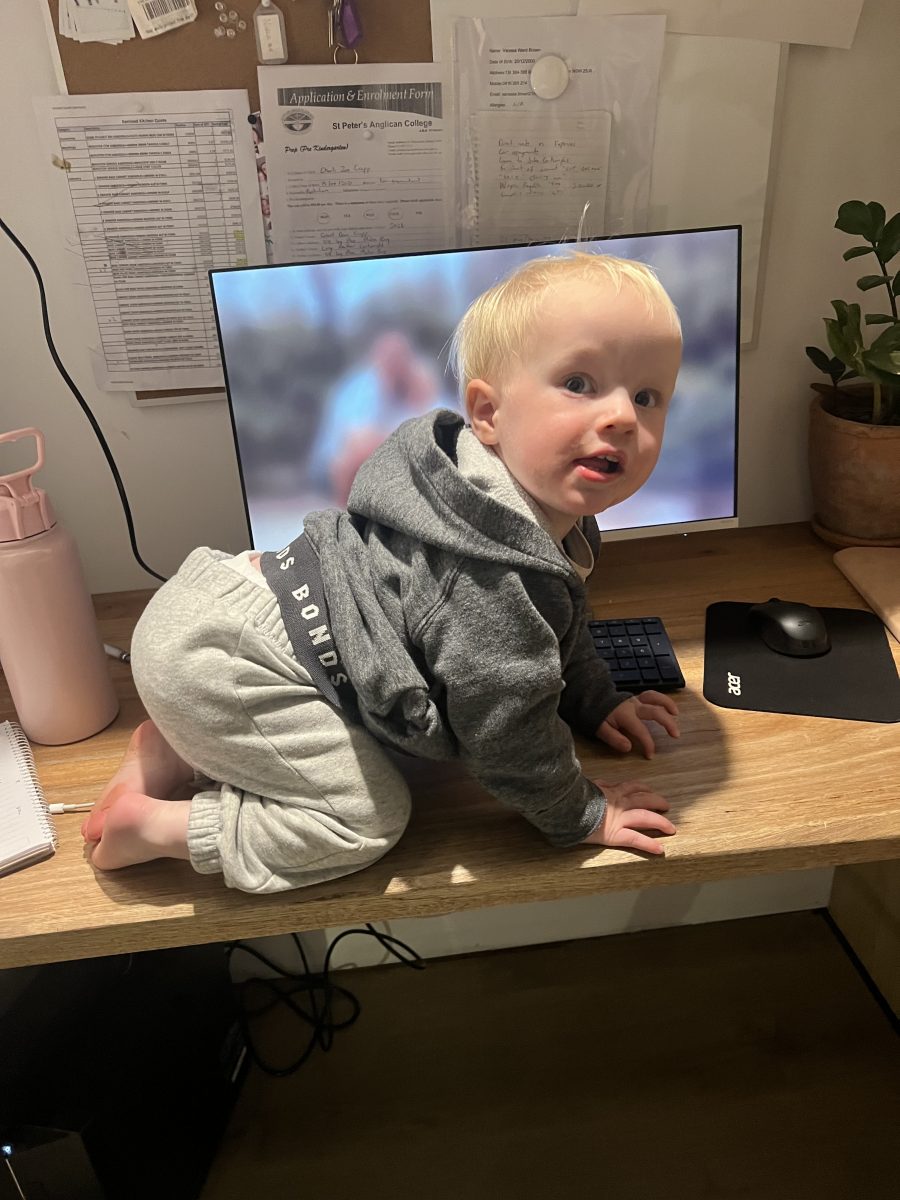
Working from home can be something of a juggling act. Photo: Hayley Nicholls.
Balancing work and school holidays is a constant juggling act for parents. My children have been staying with their grandparents for a week to allow us to attend the office during the school holidays. This is a significant favour we don’t ask for often.
Having family nearby to help out is a privilege that many people simply don’t have. Instead, we schedule ourselves up to our eyeballs, spend a fortune on holiday care programs, and in a pinch, we sneak them into the office, laden with screens and the air thick with bribery.
The level of scheduling needed to allow parents to work during school holidays can be staggering.
The average employee gets around four weeks of annual leave, while their children have 12 weeks of school holidays. While some employers may be open to allowing leave without pay, many people simply can’t afford to routinely go without income for eight weeks a year. Never mind the work commitments which would inevitably suffer due to such extended absences.
Of course, it’s not just school holidays that challenge working parents.
The simple mismatch between school hours and the average workday makes being a working parent something of a magic trick.
Again, we either pay for before and after-school care or broker a flexible arrangement with our employer if we’re lucky. This usually involves us scheduling ourselves stupid and leaves absolutely zero time in our day (or night) unaccounted for.
That said, we have come a long way in terms of offering employees flexibility and placing value on work-life balance. Perhaps, as a society, we were already on this journey, but COVID really put us on the bullet train.
Sent home, we were still expected to show up to work virtually, but it immediately became acceptable to have a small person on your lap in meetings.

Practising work/life balance. Photo: Kim Treasure.
I recall a particular meeting being ambushed, with everyone on the call being forced to look at my six-year-old’s guinea pig. Without hesitation, they ooh-ed and aah-ed appropriately. My child then pottered off, satisfied with this contribution, and we continued our meeting as though the interruption was perfectly normal.
In this post-COVID world, I like to think we now recognise the difference a bit of autonomy and flexibility makes to people, the ability to work from home when they feel it appropriate, and the flow-on effects both professionally and personally. They can isolate themselves when they need to work on a particularly laborious task, and in their breaks, they can catch up on their washing, leaving them their weekend to do things they enjoy.
For parents, this new world is an absolute Godsend! Now that our colleagues have seen our children (and their guinea pigs), they recognise how hard we have been working behind the scenes to keep up at work (and show up as though our family doesn’t exist). The cultural shift towards greater workplace flexibility is showing us that people perform best when they have the autonomy to manage their own schedules. By integrating our professional and personal lives more seamlessly, we can be more present both at work and with our families.
At school assemblies, cross country meets and swimming carnivals, I often find myself chatting with other parents who are trying to enjoy their children’s big moments while burdened with an overwhelming sense of urgency because they told their employer they were taking their lunch break, but this is taking much longer than expected.
People work best when self-possessed rather than existing in a sort of fight-or-flight hamster wheel. However, balancing work and school holidays is still a daunting task for many parents. While family support and flexible work arrangements may offer relief for some, the struggle remains real.
As we move forward, it’s crucial for employers to keep embracing flexibility and the unique needs of working parents – and, indeed, all employees. By supporting people to work in a way that suits their needs wherever practical, we create a more supportive and efficient culture both in and out of the office.




















